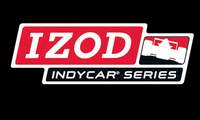IndyCar - Return Of Manufacturer Competition Leads To New Engine Rules
 |
Indianapolis, Feb. 18, 2012: The IZOD IndyCar Series' consumer-relevant, 2.2-liter, direct-injected turbocharged V-6 engines supplied by Chevrolet, Honda and Lotus make their competitive debut in five weeks at the Honda Grand Prix of St. Petersburg on March 25. The eighth annual event marks the first of 16 races over a diverse set of street/road courses and ovals to challenge drivers, teams and manufacturers.
The new engine platform, based on a recommendation from the ICONIC Advisory Committee, was made public in June 2010. Similarly, the Advisory Committee made a recommendation to INDYCAR regarding the supplier of the next-generation chassis. INDYCAR last week released its 2012 sporting and technical regulations, and today released its engine regulations.
For INDYCAR, the emphasis is on a level playing field as engine manufacturer competition returns to the IZOD IndyCar Series for the first time since 2005.
"The engine rules developed through the INDYCAR Engine Committee over the past 20 months. The only significant change was the change in capacity (from 2.4 to 2.2 liters)," said Trevor Knowles, INDYCAR's director of engine development. "In the past few Engine Committee meetings, it has been tidying up and clarifications."
The INDYCAR Engine Committee was set up as a consultative group chaired by INDYCAR Vice President of Technology Will Phillips and consisting of representatives from each engine manufacturer, a representative from the sanctioning body plus other invited attendees when appropriate (such as BorgWarner, which is supplying the single and twin turbochargers).
The engine rules will be stable through the 2016 IZOD IndyCar Series season, with any corrections or modifications decided by INDYCAR after consultation with the Engine Committee.
Manufacturers will provide a pool of engines, which INDYCAR officials will allocate to corresponding teams in a random manner. INDYCAR engine support engineers will employ and monitor torque sensors on selected manufacturers' engines to ensure compliance with homologation regulations.
"It's to track that nobody's getting left behind and to track that all their teams are getting equal treatment," Knowles said.
On June 18 and again at the end of the year, manufacturers whose engines are statistically more than 2.5 percent deficient in power may, at the discretion of INDYCAR, make improvements to be homologated. Alterations are allowed to make up 2 percent of shortcomings, and they will be introduced on only new engines being sent to the track. Homologation (sealing of mandated components) will take place next week.
Also, manufacturers can request changes to engine components and McLaren software alterations. Information would be shared with INDYCAR and the other manufacturers.
"If a manufacturer has a problem with a homologated part breaking or there is some operation that they could eliminate to make it less expensive or they have to change suppliers that would lead to changes in how it's made, they can approach us with a request and we would circulate to the other manufacturers for a check that it's not a backdoor way of increasing performance," Knowles said. "If it passes those checks, they would be given the go-ahead to do it.
"Software is similar to an engine modification. They would request a change to get it incorporated. All manufacturers would then have the opportunity to use that software."
Chevrolet, Honda and Lotus have totaled more than 13,500 miles during their phase of on-track development. Team testing is ongoing at Barber Motorsports Park, Auto Club Speedway and Sebring International Raceway. An Open Test is scheduled for March 5-6 and 8-9 at Sebring.
Engine basics
Capacity - 2.2 liter maximum
Cylinders - Up to six, all of equal capacity
RPM - 12,000 as restricted by the Engine Control Unit
Horsepower - Between 550 and 700, suited to type of circuit
Fuel - E85; fuel injection allowed
Oil - Only lubricating oil that is readily available to general public through retail methods
Boost pressure - 155KPa for road courses, 140KPa for short ovals and 130KPa for speedways. Two boost sensors will be fitted and monitored by INDYCAR
Minimum weight - 112.5kg (248 pounds), excluding items such as the clutch, ECU, fluids, turbocharger
Turbocharger - Single or twin featuring water-cooled bearing housing and titanium turbine wheel provided by BorgWarner
Mounting - Common mounting points on bulkhead and gearbox for all three manufacturers
Engine life - 1,850 miles. Each full-season entrant will receive five fresh engines per year
"Push to Pass" - Not to start 2012 season
KERS - No
Pop-off valve - No
Traction control -- No
Anti-stall - Yes
Engine architecture
Bank angle - V6 engines - between 60 and 90 degrees
Bore - 95mm diameter maximum
Engine length - 460mm, measured from mounting face to mounting face
Crankshaft height - 100mm above bottom of chassis (lowest point of sump)
One-piece crankshaft - Homogenous, with no additional non-ferrous inserts or bolt-on balance weights
Main bearing minimum dimension - 48mm diameter
Big end journal minimum dimension - 40mm diameter
Connecting rods - Homogenous, with no welding or bonding
Piston pin - Single piece only
Valve type - Reciprocating circular poppet, return force via coil spring only
Spark plug - One per cylinder otherwise free
Coatings - DLC coatings are not permitted on crankshafts, rods, camshafts, piston skirts or sleeves
Camshafts - Up to four overhead camshafts permitted (2 per bank)